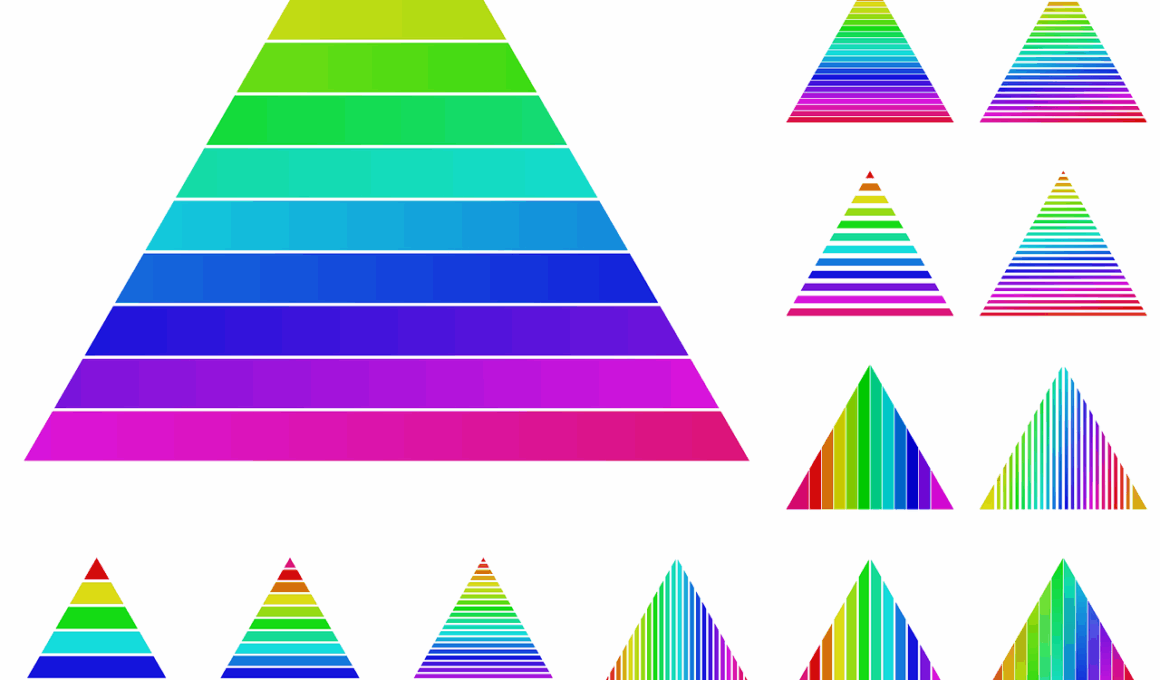The Importance of Visual Hierarchy in Business Design
Visual hierarchy in business design is critical for effective communication. It influences how information is perceived and understood by various audiences. By organizing elements according to their importance, designers can guide viewers through content seamlessly and effectively. For instance, the use of larger fonts can denote headlines, drawing the attention of readers to significant points. Additionally, contrasting colors for headings and subheadings can elevate important sections, making navigation easier. Graphics and images can also play a vital role in establishing hierarchy, as they can highlight key messages and break up textual content. Understanding the laws of design, like the Gestalt principles, can help reinforce the hierarchy effectively. Important elements need to be positioned to attract the viewer’s attention first while less significant information can be relegated to the background. When executed well, visual hierarchy enhances user experience and engagement significantly. It not only improves readability but also boosts retention of information. Thus, visual hierarchy serves as a roadmap for users, ensuring they grasp vital elements swiftly, fostering better business communication and greater overall understanding.
Elements of Visual Hierarchy
The elements of visual hierarchy are vital for delivering clear messages. Key components include size, color, contrast, and whitespace. Size indicates importance; larger elements stand out and draw attention immediately. Color choices can create emotional responses and signify urgency or relevance. By employing contrasting colors, designers can effectively differentiate between sections or elements, allowing for easier processing of information. Whitespace is equally important; it reduces clutter and makes a design feel balanced. Clutter can confuse audiences and obscure the primary message. By strategically placing elements with adequate spacing, designers create a breathable layout that facilitates focus. Typography also affects hierarchy; variations in font styles can signify different levels of information, helping the viewer to differentiate between headings and body text. Icons and images can further emphasize points visually and add layers of meaning. Furthermore, alignment and positioning contribute to the perceived order of information, guiding the viewer’s eye fluidly across the content. All these elements together create an engaging and coherent design that effectively communicates the intended messages to the audience.
Understanding your audience is essential in applying visual hierarchy. Different demographics possess varying preferences and expectations in design. While a younger audience might appreciate bold colors and playful typography, older audiences may prefer more subdued tones and traditional layouts. Researching your target audience enables designers to create tailored visuals that resonate effectively. It is crucial to consider the context and application of visuals, ensuring they are appropriate and serve their intended purpose. Testing designs with real users can provide valuable feedback on the effectiveness of visual hierarchy. Conducting usability tests can identify whether users can easily navigate through elements and comprehend information. Furthermore, A/B testing can help determine which designs perform better in achieving specific goals, such as enhanced engagement or lower bounce rates. By iterating designs based on user feedback, businesses can refine their visual strategies, ensuring they meet user expectations. Ultimately, this helps to foster a positive interaction with the brand, encouraging loyalty and trust. Designers who are versed in audience expectations are better suited to create impactful visuals that emphasize business messages effectively.
Impact on Brand Perception
Visual hierarchy significantly affects brand perception and identity. A well-executed design creates a professional image that inspires confidence in consumers. Brands that implement clear visual hierarchies communicate authority and structure, implying they are organized and trustworthy. Conversely, poorly structured designs can elicit confusion and skepticism, damaging brand reputation. Maintaining consistency across all visual elements reinforces brand identity and aids in audience recall. By utilizing the same color palettes, typography, and imagery styles across platforms, businesses can establish a cohesive presence in the market. This uniformity fosters familiarity, making users more comfortable interacting with the brand’s offerings. Furthermore, visual hierarchy can differentiate a brand within saturated markets; companies using unique and striking designs stand out from competitors. This distinctive appeal often translates into increased customer engagement and long-term loyalty. Building an aesthetically pleasing yet functional design can ensure that audiences perceive a company as innovative and forward-thinking. Ultimately, effective visual hierarchy thus not only enhances communication but also elevates the overall perception of the brand among consumers.
Incorporating feedback is essential for refining visual strategy. Designers must remain open to constructive criticism to ensure their designs meet objectives. Gathering opinions from stakeholders, team members, or consumers can provide diverse perspectives on effectiveness. Implementing iterative design practices allows for adjustments based on feedback, ultimately leading to improved outcomes. Utilizing tools such as online surveys can facilitate easy data collection, offering valuable insights into audiences’ thoughts and experiences. Reviewing analytics on content engagement helps designers understand which elements successfully draw attention and which fall flat. Such data-driven approaches lead to designs that resonate more with target audiences. Collaboration between teams enhances creativity and ensures multi-faceted insights inform design choices. Effective teamwork fosters a deeper understanding of the business objectives, leading to a cohesive visual strategy. Moreover, leveraging design critiques can inspire fresh ideas that enhance visual hierarchy and communication effectiveness. By systematically incorporating feedback into the design process, teams create visuals that are compelling as well as functionally sound, ensuring that the final product effectively meets the business’s communication goals.
Tools for Visual Design
Various tools exist to enhance the design process, enabling businesses to implement visual hierarchy effectively. Software such as Adobe Photoshop and Illustrator provides extensive functionalities for creating detailed visuals. For web design, platforms like Figma and Sketch support creating prototypes with a focus on user interaction and hierarchy. These tools feature user-friendly interfaces that allow designers to experiment with layouts and color schemes easily. Accessibility options are also crucial; using design tools that support accessible practices ensures that visual elements can be perceived by all users. Utilizing tools like Canva allows non-designers to create aesthetically pleasing materials easily, broadening the accessibility, promoting consistent branding efforts across departments. Furthermore, employing analytics tools such as Google Analytics allows designers to track user interactions and effectiveness of visuals in real-time. These insights enable continuous refinement of visual strategies, ensuring the hierarchy remains effective over time. As technology advances, staying updated with the latest design tools can significantly impact the effectiveness of visual communication strategies. By leveraging these tools, teams can produce impactful designs that align with strategic business objectives.
In conclusion, understanding and implementing visual hierarchy in business design is crucial. It enhances the communication of information and influences how audiences perceive and interact with content. Creating structured yet engaging designs can foster positive user experiences. As businesses continue to transition to digital platforms, effective visual communication becomes increasingly essential. Clear visual hierarchies enable audiences to navigate through information effortlessly, fostering engagement and reducing frustration. Moreover, the impact of visual hierarchy extends to brand perception, influencing user loyalty and trust. By prioritizing well-organized layouts and adhering to design principles, companies can stand out effectively in their respective markets. Investing in quality design can significantly enhance user retention, ultimately contributing to business success. Collaboration, feedback, and the utilization of the right tools can further refine visual strategies, creating effective designs that resonate with audiences. As a result, businesses should prioritize ongoing education and skill development among designers to adapt to changing trends. To thrive in competitive markets, harnessing the power of visual hierarchy is indispensable. With informed design decisions, brands can effectively communicate their messages and cultivate meaningful connections with consumers.



